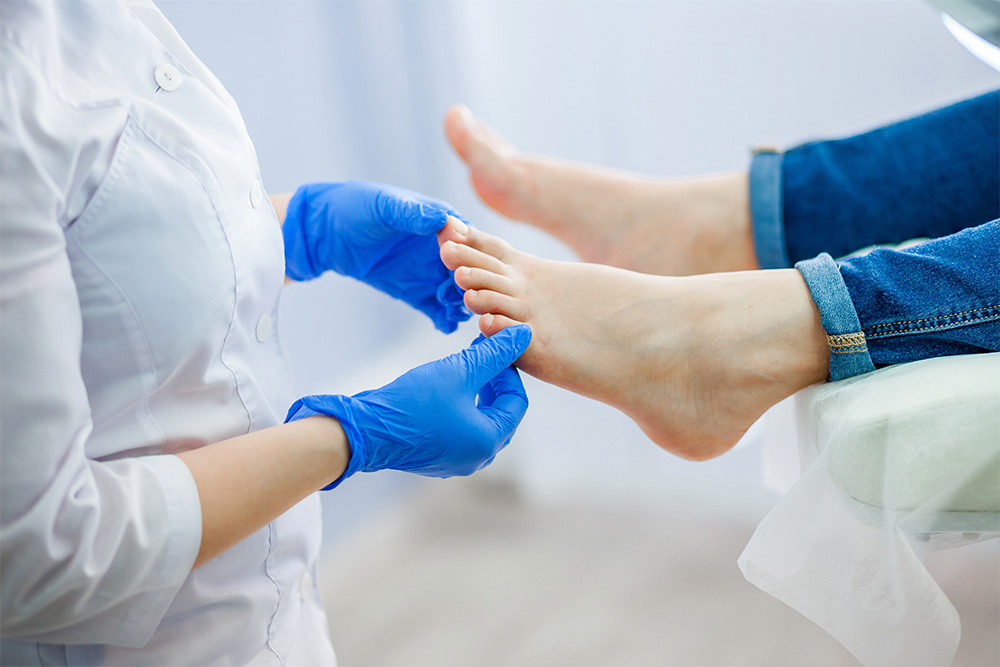Foot doctors are also called DPM [doctors of podiatry medicine]. They are surgeons or physicians educated to treat lower legs including foot and ankle. Podiatrists are even called chiropodists. They can specialize in different foot medicine areas including sports medicine, surgery, diabetes, wound care, pediatric, and more.
People suffering from poor blood circulation, diabetes, obesity, high cholesterol, arthritis, and heart disease are at risk of foot issues. Even sports injuries involving the ankle or foot will need a podiatrist visit.
If you experience any of the symptoms or foot issues, it is time to schedule a podiatrist appointment.
Swelling, numbness, or pain in the foot
It is normal to feel swollen or sore in a foot after standing for long or running a marathon. Nevertheless, sudden swelling, numbness, or inflammation in one foot without a clear reason indicates serious issues. It needs a podiatry clinic visit!!
Nail fungus
Nail salons are growing in popularity so are the cases of toenail fungal infection. Nail fungus discolors the toenail, which starts under the nail tip. If ignored the infection spreads. An Orange toenail can even be because of a toe injury like dropping something on the toe with force. The blood finds it hard to spill out easily, so it sits there causing discoloration as it ages.
Trauma can even make toenails lift, which allows dirt to get trapped and fungus to develop. Medication is necessary to remove the toenail infection and discoloration.
Frequent athlete’s foot issue
Common fungal infections can be treated with OTC sprays and lotions. Contagious fungi called dermatophytes causes an athlete’s foot. A humid environment favors the growth of these organisms in pools, gyms, and other public places. Even damp shoes and socks help to spread the fungi. The athlete’s foot is white with itchy patches between the toes. People with vulnerable immune systems need to avoid over-the-counter drugs, but plan a visit to their podiatrist.
Ingrown toenails
Ingrown nails are common nail impairment. The corners or sides of the nail dig painfully into the nail grooves’ soft tissues leading to swelling, redness, and discomfort. Generally, toenails grow straight but sometimes the curve of the corners penetrates the flesh.
Ingrown toenail conditions can be treated at home, but people with peripheral vascular disease, diabetes, or circulatory disorders must avoid self-medication or treatment and visit the nearest podiatry clinic.
Bunions
Bunions are bony bumps, which develop on the big toe joints’ external side. When the bunions increase they cause inflammation. Running or walking a lot can worsen the inflammation. Even foot injuries or rheumatoid arthritis can cause bunions. They never vanish, so schedule a podiatrist visit.
The podiatrist focuses on relieving symptoms using bunion pads, medical tape, or a change in footwear. Physical therapy, injections, and pain relievers are also prescribed. Bunion surgery is the last alternative. The podiatrist uses a bunionectomy procedure to remove the extremely painful bunion.
Taking good care of feet is essential to prevent common issues that can worsen into something permanent. Dr. Sima is a popular podiatrist in Irvine with an experience of twenty years of treating foot issues surgically and non-surgically. It includes Bunion surgery, ingrown toenail laser treatment, and stem cell therapy.


